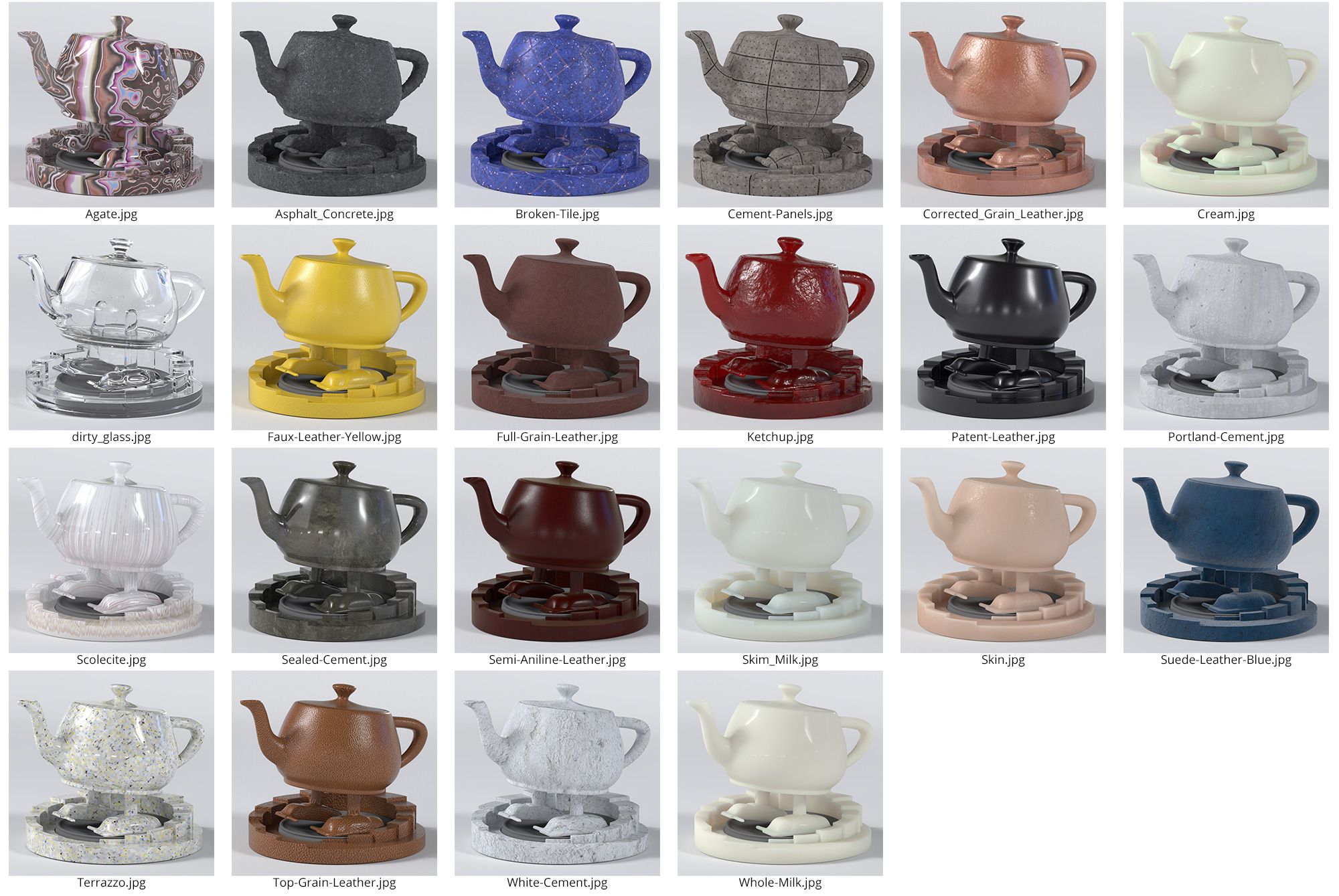
- Renderman textures how to#
- Renderman textures pro#
- Renderman textures code#
- Renderman textures download#
512, 1024, etc.), and Rtx plugins are no exception. PRMan, unlike some of the other RenderMan-compliant renderers, is very strict about texture dimensions being powers of two (e.g. Your plugin may specify to PRMan what the minimum and maximum dimensions you are able to provide, but it does not use these numbers verbatim. PRman will then search the texture path looking for your library, and the key/value pairs are provided to your plugin as a list of strings via the argc and argv attributes of the texture context. Note that every key must have a value (designated by =) or PRMan will segfault. Swap out YourPluginName for the name of your compiled library (with or without the extension), and append as many key/value pairs to the end using standard URL query string syntax.

texture, environment, etc.), which looks roughly like: It turns out that you provide a specially formatted string as a texture name to any of the texture functions (e.g.
Renderman textures how to#
The Rtx docs make no mention whatsoever about how to actually use your plugin. Herein lie some small nuggets that I needed to figure out as I went that will make subsequent PRMan/Python projects smoother. See PythonRtx.cpp for the majority of the implementation of steps 2 through 5. Conveniently, PRMan and interleave the image data exactly the same.įinally, copy bytes from the Python string to the provided pointer when requested. Using the Python C API, get the requested function (identified by "module" and "function" in the texture URI), build the kwargs to call it with out of the remaining URI parameters, and call it.Ĭheck the return value, which in this implementation should be a tuple with 4 objects: the width of the image, the height of the image, the number of channels, and a string of the raw image data. Just get it to print "Hello PRMan!" when the Rtx plugin is opened.

This applied to a small stack of spheres looks like:Įmbed the Python interpreter using the docs on the subject. It turns out that quickly mocking this together is pretty straight forward, as the "Getting Started" instructions for each part are quite compatible the steps I took were generally:īuild a basic Rtx plugin using the example as a template see DebugRtx.cpp for my Rtx plugin which returns gradients across the requested tile. PRMan), and APIs specific to that product unfortunately this does not work for any arbitrary RenderMan-compliant renderer.) 10,000ft Overview

Renderman textures pro#
(Note that I am using Pixar's RenderMan Pro Server (i.e.
Renderman textures code#
Unfortunately, that code is lost to the ages, so I decided to revisit my efforts and produce something that could actually have applications: using Python as a source of texture data for RenderMan.

Previously, I combined my efforts by embedding Python into RenderMan as an RSL shadeop so that shaders could be written in Python!
Renderman textures download#
Project files include the 3D asset, Mari procedural nodes, and the Index of Refraction values used in the material creation process for the RenderMan shader and are available to download with a subscription.In order to better understand the guts of Python and RenderMan, in the past I have implemented a number of proof of concept projects extending or embedding each. He additionally walks through how to set up a test scene using RenderMan for Maya to test the progress of the textures produced during the series. Topics range from production UVs, material assignments in Maya, to working with different packages including Substance Painter for baking utility maps as well as using texture resources from both Substance Source and Megascans. He also explains how to use physical values for texturing from the Index of Refraction databases and discusses how a typical feature film pipeline works to provide all-important industry insights. Peter reveals how to texture assets for RenderMan using physical values and shows how to create some of the major materials, highlighting a combination of techniques that are both procedural and texture-library-based. The workshop then gradually builds on the processes explored in the initial chapters, while demonstrating how to work with a typical hero UDIM asset that would be found in the majority of feature films. During 8.5 hours of video tutorials, Peter walks through the techniques he uses in production using primarily Mari and Maya, beginning with the fundamentals and demonstrations of more beginner concepts covering the Mari node graph - perfect for those transitioning from a layer-based workflow. This comprehensive material texturing workshop teaches industry-proven techniques tried and tested on feature films by Lead Texture Artist, Peter Aversten.


 0 kommentar(er)
0 kommentar(er)
